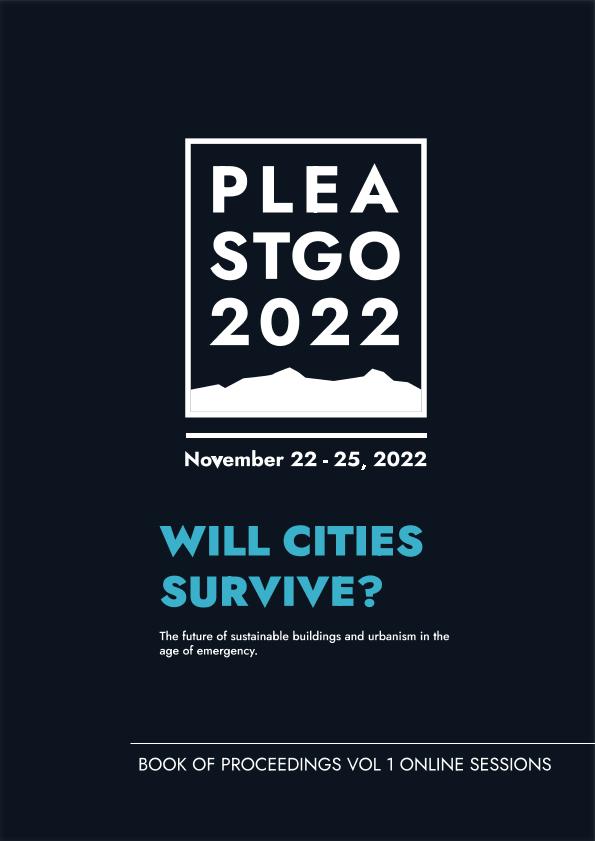Evento
Beyond an energy-centric perspective, Building Environmental Assessment Methods (BEAM) may contribute to the achievement of healthier indoor built environments, allowing building sustainability to reach its full potential as a public health transformation tool. The objective of this paper is to characterize WELL V2 by means of two-stage heuristic analysis method (i.e. based on expert criteria): (i) a qualitative screening based on seven dimensions of analysis and (ii) a 0-100 quantitative assessment of nine dimensions of analysis. Our first stage results showed that WELL fulfilled all of the proposed criteria for other more established BEAM. Stage two results showed an overall score of 68, below LEED and BREEAM scores from the literature, and above CASBEE, HK-BEAM, and GREENSTAR. In terms of applicability, WELL lacks of lifecycle related criteria. WELL V2 showed a good comparative performance among BEAMs, placing it as a seminal method for the creation of new and more suitable wellbeing and health labelling systems, mimicking the role BREEAM played at the end of the 20th century. KEYWORDS: Integrative Lighting, Environmental Assessment Method, Overview Beyond an energy - centric perspective, Building Environmental Assessment Methods (BEAM) may contribute to the achievement of healthier indoor built environments, allowing building sustainability to reach its full potential as a public health transformation too l. The objecti ve of this paper is to characterize WELL V2 by means of two -stage heuristic analysis method (i.e. based on expert criteria): (i) a qualitative screening based on seven dimensions of analysis and (ii) a 0 -100 quantitative assessment of nine dimensions of an alysis. Our first stage results showed that WELL fulfilled all of the proposed criteria for other more established BEAM. Stage two results showed an overall score of 68, below LEED and BREEAM scores from the literature, and above CASBEE, HK-BEAM, and GREEN STAR. In terms of applicability, WELL lack s of lifecycle related criteria. WELL V2 showed a good comparative performance among BEAMs, placing it as a seminal method for the creation of new and more suitable wellbeing and health labelling systems, mimicking the role BREEAM played at the end of the 20th century.
Comparative overview of lighting credits from WELL environmental assessment method
Colaboradores:
Bustamante, Waldo; Andrade, Mariana; Ortiz, Pablo E.
Tipo del evento:
Conferencia
Nombre del evento:
Passive and Low Energy Architecture: Will cities survive? The future of sustainable buildings and urbanism in the age of emergency
Fecha del evento:
22/11/2022
Institución Organizadora:
Passive and Low Energy Architecture;
Centro de Desarrollo Urbano Sustentable;
Pontífica Universidad Católica de Chile. Facultad de Arquitectura, Diseño y Estudios Urbanos;
Universidad de Concepción;
Agencia Nacional de Investigación y Desarrollo;
Título del Libro:
Will cities Survives? The future of sustainable buildings and urbanism in the age of emergency
Editorial:
Passive and Low Energy Architecture
ISBN:
978-956-14-3068-6
Idioma:
Inglés
Clasificación temática:
Resumen
Palabras clave:
LIGHTING
,
ENVIRONMENTAL ASSESSMENT mETHOD
,
OVERVIEW
Archivos asociados
Licencia
Identificadores
Colecciones
Eventos(INAHE)
Eventos de INSTITUTO DE AMBIENTE, HABITAT Y ENERGIA
Eventos de INSTITUTO DE AMBIENTE, HABITAT Y ENERGIA
Citación
Comparative overview of lighting credits from WELL environmental assessment method; Passive and Low Energy Architecture: Will cities survive? The future of sustainable buildings and urbanism in the age of emergency; Santiago de Chile; Chile; 2022; 768-772
Compartir




